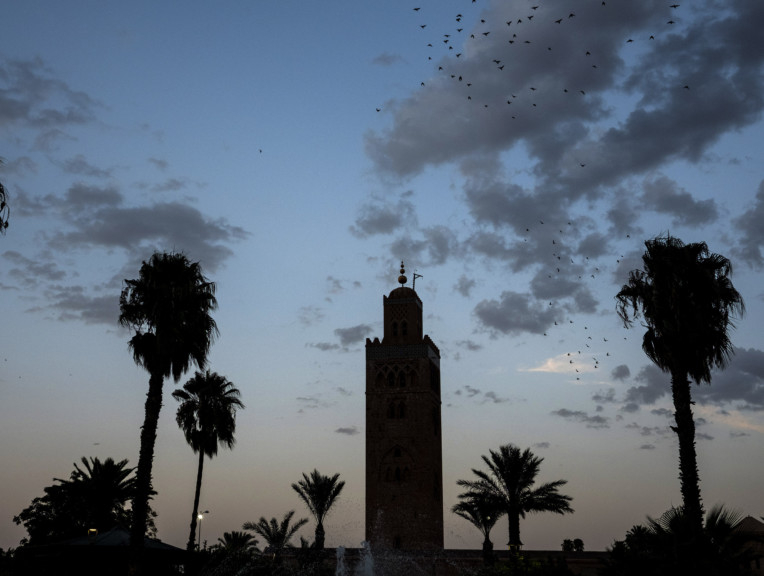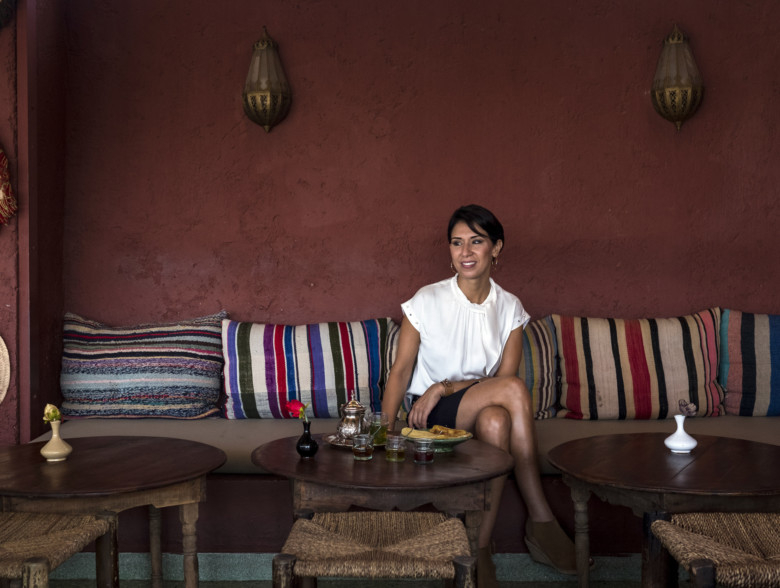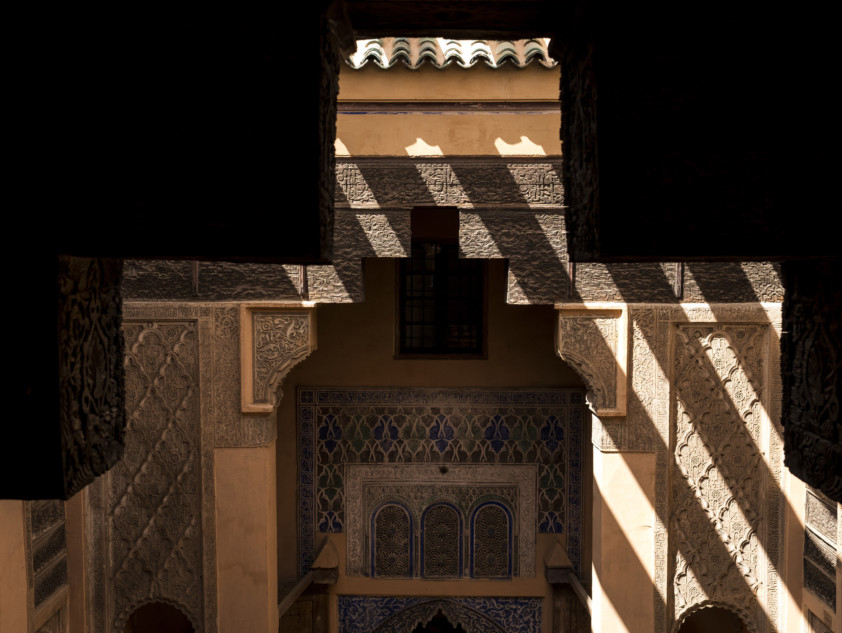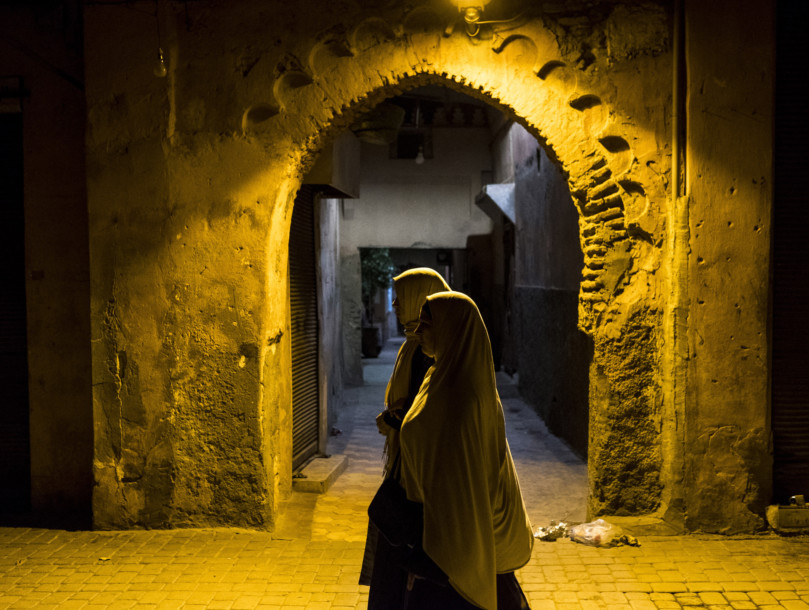_resources1_16a08522e8e_medium.jpg)
Twenty years after my first visit, some things about Marrakech remain remarkably similar. The medina — the labyrinthine old part of the city — is still partly populated by stooped men in djellabas and the occasional donkey-led cart. The late afternoon light hits the high walls of its alleys in warming hues of yellow and orange. It still feels, at times, that everyone wants to sell you something.
Around dusk, the Jemaa Al Fna, the medina’s main square, still goes through the same transformation: Juice vendors and the occasional snake charmer are replaced by a dizzying array of food stalls and circles of musicians.
Some things, though, have changed. Those donkey carts now share space with cheap scooters, which spin around corners spewing growls and plumes of exhaust. (My Moroccan translator and travel companion, Abdullah Aboulhamid, told me that, owing to the spike in accidents, a wing of the city hospital had adopted a nickname: C90, the scooter’s model name.)
In 1998, taking a photo of one of those musical performances in the square meant interrupting it while one of the musicians demanded payment. Today, payment is demanded for cell phone videos.

Perhaps the most transformative change: Twenty years ago, I struggled to connect, using my barely conversational French; now almost anyone under the age of 35 or 40 speaks English (and, often, not French).
The biggest changes, though, had less to do with the place than how I was travelling.
In 1998, my time in Marrakech was part of a six-month solo trip, a month of that in Morocco. What I later realised was that it could not be duplicated: A trip that came at just the right moment in my life, when I was unattached but old enough to know what I wanted — and needed — out of travel.
I replaced my $10-a-night (Dh36.72) room at a hotel that no longer exists with the cheapest room I could find (140 euros a night, or about $162) at the lovely Riad Mena. (Riads — the term refers to a traditional home built around a courtyard, but is now used for bed-and-breakfasts that are often filled with flora, fountains and hammams, and generally owned by expats — are now everywhere.) I not only had a cell phone, but was active on Instagram, Twitter and Facebook; 20 years ago, I didn’t see the photos from my analogue camera until I returned home.

But I could never get Marrakech and Morocco out of my head. Soon after my trip, I started working at The New York Times and, years later, as an editor in the Travel section. This time, I could return as a journalist.
Since my first trip, Marrakech has become Morocco’s premier tourist city. For decades it has attracted travellers, although at a much smaller scale. “Everybody knows everybody else in Marrakech,” wrote the English author Peter Mayne in his 1953 memoir, A Year in Marrakesh.
“At least everybody knows everyone who lives here — the tourists who come in for a look at the city and a taste of its delights don’t count, except to have francs taken off them.”
But unlike cosmopolitan Casablanca, or Tangier, which, being a short ferry ride away from Spain, had the chaotic transience of a border town, Marrakech has stayed both exciting and accessible for Western travellers.
In recent years, the Moroccan government has poured money into modernising its infrastructure. It has also attracted hundreds of expats — French, English, Spanish, German, American — many of whom have invested in riads or restaurants.
Travel media has embraced this trend: Almost every article I read before my return trip revolved around expats.
This time around, I desperately wanted to connect with native Moroccans who were doing interesting, creative things. I discovered a vibrant cultural scene, one filled with men and women who care deeply about celebrating their city and country — but who are fighting an uphill battle against a lack of support from the Moroccan government and that influx of expats.
Local entrepreneurs
Even by the house-of-mirrors standards of the medina, Dar Cherifa, a riad owned by Abdellatif Ait Ben Abdullah, had been difficult to find. Abdullah, my translator, and I, had gone down a side alley and then through another riad to find it. The space dates to the 16th century; Ait Ben Abdallah and his team renovated it in 2000 but had left more or less intact intricate, weathered carvings in the stone and wood that wrap around the second floor of the courtyard.

At ground level, tables were scattered amid Berber rugs and a small pool covered in rose petals, and, on the walls, panelled, Japanese-style paintings by Veronique Rischard, a French artist. Scents of rosewater and orange blossom filled the space.
Over tea and Moroccan pastries, I asked Ait Ben Abdullah, 56, who owns seven riads around the medina (and another in Fez), if he was the exception or the rule as a native riad owner. The exception, he said, estimating that 90 to 95 per cent are owned by foreigners. But that didn’t exactly bother him.
“Thirty years ago, Moroccans didn’t want to live in the medina,” he said in French, as Abdellah translated. The foreigners, he said, were helping support an infrastructure — and moreover, the very existence of the medina, where centuries-old properties were being destroyed. “I would sell riads to the devil if it helped me get Moroccans to open their eyes to how the medina is being destroyed.”
Ait Ben Abdullah was born outside the city and moved to his aunt’s house in the medina at age seven. As a successful entrepreneur, he now wanted to give back, not just by renovating riads but by educating children in his hometown, where he runs cultural events that provide arts education. He employs about 120 people at his properties, and at Dar Cherifa, he hosts free readings, a restaurant and exhibitions.
“Working in heritage is important,” he said, smiling broadly, “but creating jobs really matters more.”
Moroccan ingredients
Ait Ben Abdullah is successful, but not a multinational star like the chef Meryem Cherkaoui. Cherkaoui, a stylish woman of 41 with dark, short-cropped hair, grew up in Sale, near the capital of Rabat. She now lives and works in Casablanca but consults with restaurants around the country, including Marrakech, and overseas. She has appeared on the French version of Top Chef and sells a line of culinary products, which emphasises Moroccan ingredients.
We dined on the rooftop of Le Foundouk, a three-story restaurant in the medina for which she consults (the owner, Frederic Velissariou, is French; the chef, Mohammad Amine Al Amrani, is Moroccan). As we sampled her dishes, including a fanciful couscous with lobster and edible flowers, she explained her approach: “Moroccan ingredients, French technique.”
On my first visit to Morocco, I was unimpressed by the food, which, thanks to my budget and lack of experimental vigour, was limited mostly to couscous and tagine. This time, I sought to remedy that. For breakfast, I ate harira, a spiced vegetable soup, and fried eggs (and, as with every meal, mint tea).
For dinner, bastillas, savoury-and-sweet pies of flaky dough, generally made with chicken or pigeon; and, most memorably, tangia, a Marrakechi speciality like a tagine but cooked in a different sort of pot (think urn rather than circus tent), and more brothy, flavoured with ras el hanout and preserved lemon. It originally was cooked overnight in ovens adjacent to hammams (ritual steam baths) over the bath’s residual embers. My favourite version, served at one of two outposts of Zeitoun Cafe, where I dined with Cherkaoui, was made with chameau — camel. (The flavour and texture is somewhere between lamb and beef.)
The culture side
A couple of days later, I was, again, lost in the medina. That much had not changed. The first three nights of my visit, I had lost my way getting back to my riad — despite the impressive coverage of the medina by Google Maps. This time, I was seeking Le 18, an art space and cooperative deep in the medina. I passed a large “18” painted above a small door in an alley before a teenager told me, yes, that was the place.
I ducked into a courtyard that was whitewashed and pleasantly spartan, and was greeted by Laila Hida, 34, who founded the space in 2013. We sat down at a wooden table in the middle of the courtyard; pieces of art of various sorts — photographic, multimedia, sculptural — were scattered on the walls. Hida is taciturn in a thoughtful way, with long, dark hair and a mischievous smile.
Le 18 had begun as a way to connect young artistic Marrakechi. “Little by little the community got bigger,” Hida said. “Without choosing to become a cultural space, that’s what we became.”
Within the first year, Le 18 hosted about 20 events — and now presents exhibitions, talks, performances and screenings. It has also just put out its first magazine, Chergui (named after a warm wind from the Sahara) — “without anything, without money” from the government, she added.
Le 18, Hida said, is filling a void. “There was a great need for a cultural scene that was alive.” But there were challenges. If there was one reality echoed by all the Marrakechi I spent time with, it was that they were more or less on their own. Far more than it was 20 years ago, Marrakech is now an international city, one essentially designated by the government as the tourist destination of Morocco. But few of these locals had gotten any help from that same government.
“No one will help you from the state, from the ministries,” Hida said. “There is no place for organisations, for artists that are not within the voice that the states wants to bring up.”
Still, Hida and other creative types reflect the medina’s energy, at turns frenetic and languid. “It’s a great richness, being in the medina,” she said, as we lunched on kefta tagine. “It’s made us think about how to be humble.”

It is also a tricky place to be a young woman in a creative field. (According to a 2017 report by the World Economic Forum, Morocco ranked 136th out of 144 countries in gender parity.) “It’s not easy being a woman in Morocco,” Hida said. “Women are the ones, for me, doing the toughest things.”
She also understands, to a degree, why the arts aren’t more in the forefront in modern Morocco, still a country grappling with poverty; a 2017 study by Global Finance magazine ranked it the 75th poorest in the world out of 189. “People think that culture is superfluous,” she said. “That there are more urgent matters.”
Indeed, although there are still major cultural events and venues in the city, this year’s version of one of the biggest, the Marrakech Biennale — founded in 2004 by Vanessa Branson, the sister of the billionaire Richard Branson — was cancelled because of a lack of funding.
After my meeting with Hida, I headed back to the Jemaa Al Fna for a final dinner. I watched as its daily transformation began: juice vendors making way for sellers of snail soup and sheep’s head. The sun went down and the square swarmed with activity. It all felt surprisingly familiar.




